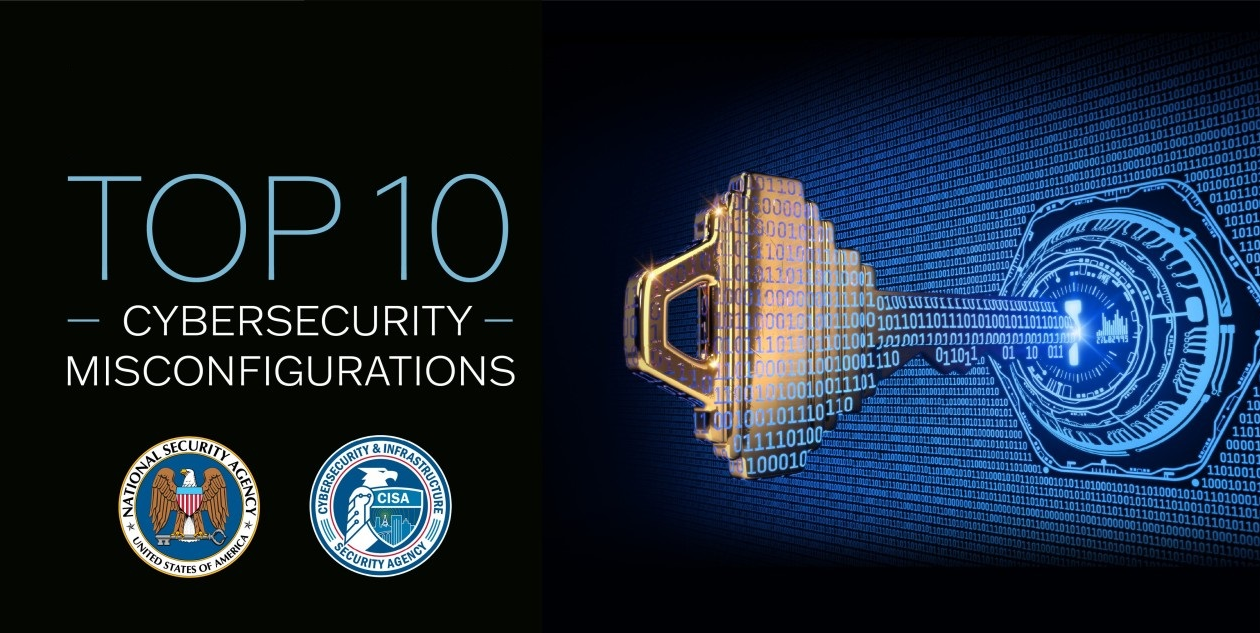Welcome to the world of cybersecurity, where knowledge is power. As guardians of our digital realms, it’s crucial to stay informed about the latest threats and vulnerabilities. In this post, we delve into the wisdom shared by the National Security Agency (NSA) and the Cybersecurity and Infrastructure Security Agency (CISA). They’ve revealed the top 10 common misconfigurations that can expose businesses to cyber threats. Let’s explore these misconfigurations in greater detail to understand the risks they pose and the measures to prevent them.
The Importance of Cyber Hygiene
Before we dive into the specifics, let’s emphasize the importance of cybersecurity hygiene. Just as personal hygiene is essential for our health, maintaining a clean and secure digital environment is crucial for the well-being of our businesses. Neglecting cybersecurity hygiene can leave vulnerabilities open to exploitation, potentially leading to data breaches, financial losses, and damage to your organization’s reputation.
Summarizing the Top 10 Misconfigurations
Now, let’s explore these common misconfigurations and understand how to avoid them:
1. Improperly Configured Cloud Storage:
The widespread adoption of cloud storage services has transformed the way businesses manage data. However, misconfigured cloud storage settings can lead to unauthorized access. To mitigate this risk, it’s essential to review and restrict access permissions for cloud storage services. Regularly audit your cloud configurations to ensure that only authorized personnel have access to sensitive data.
2. Inadequate Network Segmentation:
Failing to segment your network properly can allow attackers to move freely once they breach one part of your system. Implement strong network segmentation practices to isolate critical assets. By compartmentalizing your network, you limit the lateral movement of cybercriminals and reduce the impact of potential breaches.
3. Lack of Multi-Factor Authentication (MFA):
Authentication through passwords alone is no longer sufficient to protect accounts. Not enabling MFA can leave accounts vulnerable to password attacks. Implement MFA wherever possible to add an extra layer of security. MFA requires users to provide two or more forms of identification before gaining access, significantly reducing the risk of unauthorized entry.
4. Weak or Default Passwords:
Passwords like “123456” are an open invitation to attackers. Encourage strong, unique passwords and regularly update them. Consider using password management tools to generate and store complex passwords securely. Implementing password policies that require regular password changes can also enhance security.
5. Unpatched Software:
Delaying software updates can lead to known vulnerabilities being exploited. Stay vigilant and keep your software up to date. Establish a proactive patch management process to ensure that security patches are applied promptly. Vulnerability scans and automated patch deployment can streamline this critical task.
6. Misconfigured Security Settings:
Failing to configure security settings properly can expose your systems to a wide range of threats. Regularly review and adjust security settings to align with best practices. This includes firewall rules, access controls, and encryption settings. Conduct security assessments to identify and rectify configuration errors.
7. Lack of Logging and Monitoring:
Without robust logging and monitoring, you may not detect security incidents promptly. Implement comprehensive logging and monitoring solutions to stay alert to potential threats. Real-time monitoring of system logs and network traffic can provide early detection of suspicious activities, allowing your organization to respond proactively.
8. Ignoring Security Advisories:
Disregarding security advisories can result in missed critical updates and vulnerability patches. Stay informed and act swiftly on security advisories. Subscribe to security mailing lists and follow reputable sources for timely information on emerging threats and recommended actions.
9. Overexposed Services:
Exposing unnecessary services can broaden the attack surface, increasing the likelihood of a successful cyberattack. Review and restrict services to minimize exposure. Conduct a thorough inventory of services running on your network and disable any that are unnecessary or no longer in use.
10. Not Regularly Testing Security Measures:
Failing to regularly test your security measures can result in blind spots. Regularly conduct security assessments, including penetration testing, to identify and address vulnerabilities. Penetration tests simulate cyberattacks to uncover weaknesses in your defenses. These tests provide valuable insights into areas that require improvement.
Conclusion
In conclusion, knowledge is our greatest defense in the realm of cybersecurity. By understanding and addressing these top 10 common misconfigurations, you can fortify your digital defenses and reduce the risk of falling victim to cyber threats.
Remember, cybersecurity is an ongoing commitment. Regularly review, update, and test your security measures to stay ahead of evolving threats. By prioritizing cybersecurity hygiene and remaining vigilant, your business can thrive securely in today’s digital landscape.


